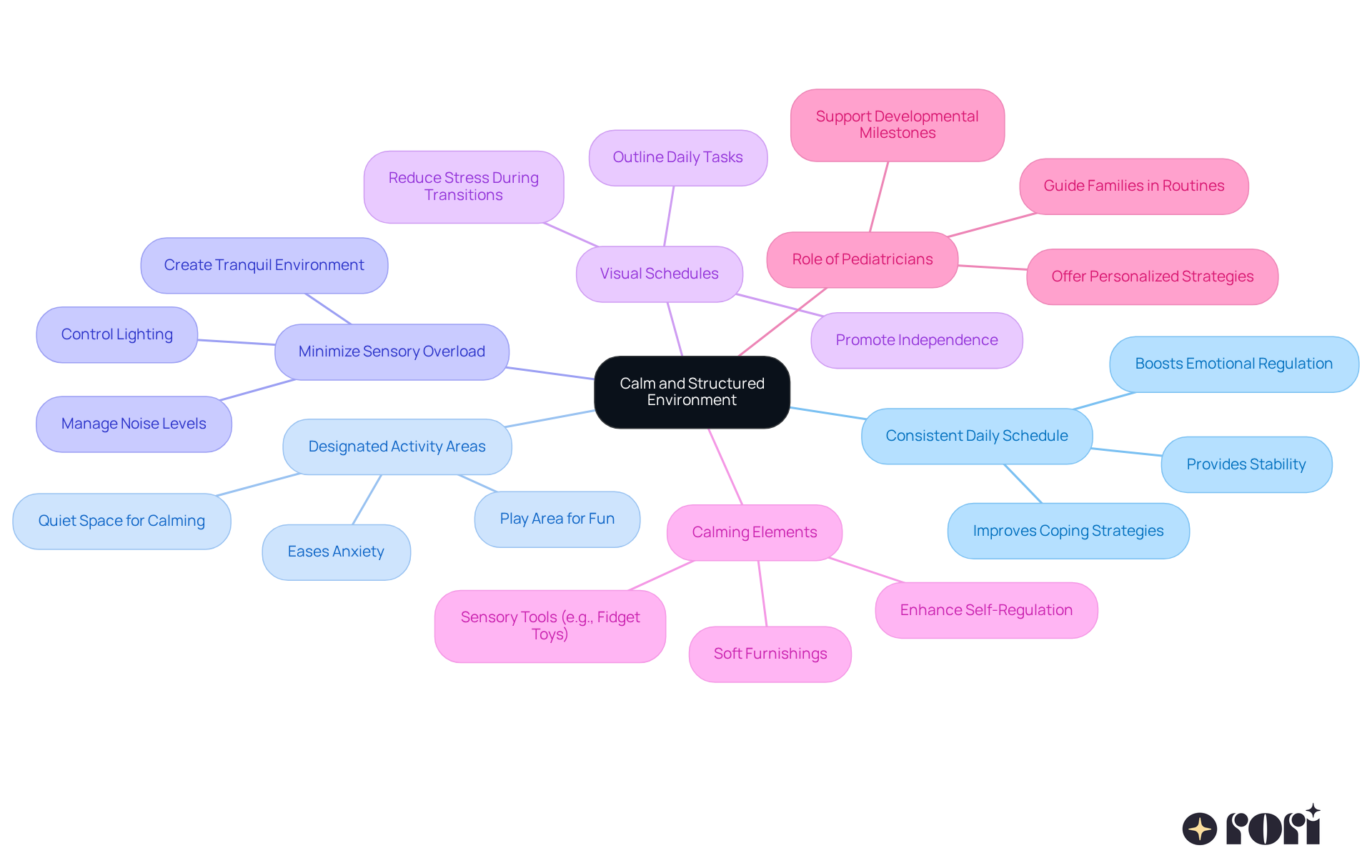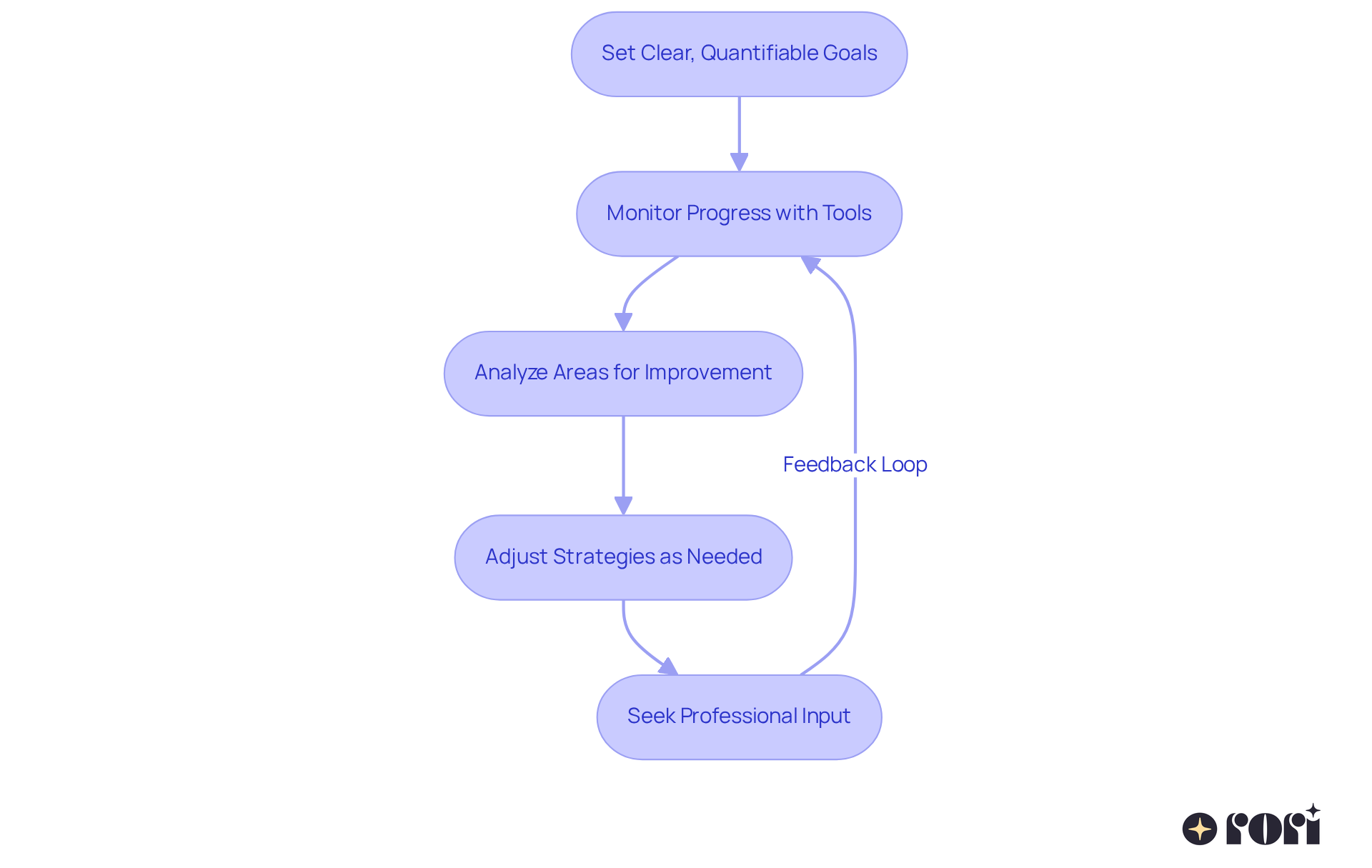Managing challenging behaviors in children with autism can feel overwhelming at times. But don’t worry, you’re not alone! Let’s explore four effective coping strategies that can make a real difference.
Positive reinforcement techniques. These are all about celebrating the small wins! When your child shows positive behavior, a little praise or a small reward can go a long way in encouraging them to repeat that behavior. It’s amazing how a simple ‘great job!’ can light up their day and motivate them.
Creating a calm and structured environment. Think of it as setting the stage for success! A predictable routine can help your child feel secure and reduce anxiety. You might find that having a visual schedule or a quiet space for them to retreat to can work wonders.
Regularly monitoring and adjusting your strategies. What works today might not work tomorrow, and that’s perfectly okay! Stay flexible and be ready to tweak your approach as needed. This adaptability shows your child that you’re in this together, and it helps them learn to navigate their own feelings.
Seeking support and resources. These strategies are backed by research and expert recommendations, highlighting the importance of tailored interventions. Remember, every child is unique, and what works for one might not work for another. So, don’t hesitate to reach out for support or resources that can help you on this journey.
We’re here to help you every step of the way! Let’s connect and share our experiences. Together, we can create a nurturing environment that enhances emotional regulation and behavioral management for our children.
Navigating the complexities of autism can often feel like wandering through a maze filled with unexpected challenges. For many parents and caregivers, managing difficult behaviors like meltdowns, self-injurious actions, and noncompliance can be particularly tough. You’re not alone in this journey!
In this article, we’ll dive into practical techniques that can empower you to create a supportive environment for your child. Think of it as building a toolkit filled with positive reinforcement strategies and adaptable approaches tailored to individual needs. How can we transform these challenging moments into opportunities for growth and understanding? Let’s explore this together!
By sharing relatable experiences and insights, we hope to foster a sense of belonging and shared understanding. After all, every step you take is a step toward a brighter future for your family. We’re here to help you every step of the way!
When it comes to children with autism, many parents encounter some common challenging behaviors and seek coping strategies for challenging behaviour autism. Let’s take a closer look at a few of these, shall we?
Meltdowns: These intense emotional outbursts can happen when a child feels overwhelmed or frustrated. It’s important to know that recent studies show about 59% of individuals with developmental disorders experience meltdowns at some point in their lives. You’re definitely not alone in this!
Self-Injurious Behaviors: Some children may engage in actions like head-banging or biting themselves. This can be distressing for both the child and their caregivers. Research indicates that 44% of children identified with autism who participated in self-harming actions continued to display these behaviors ten years later. It’s tough to see your child struggle.
Aggression Towards Others: This can include hitting, biting, or other forms of physical aggression. It’s significant to note that 49% of participants in studies showed various types of aggressive actions. Understanding the triggers can significantly aid in establishing coping strategies for challenging behaviour autism.
Property Destruction: Sometimes, kids might break toys or other items, often due to frustration or sensory overload. It’s a way of expressing what they’re feeling inside.
Noncompliance: Refusing to follow instructions can be a real challenge at home or in school. It’s a common hurdle many parents face.
Keeping a diary of these behaviors can be a game-changer! It helps you monitor occurrences and recognize triggers associated with these actions. By observing patterns, you can better understand your child's needs and implement coping strategies for challenging behaviour autism.
Don’t hesitate to consult resources like the Autism Research Institute's self-injurious conduct questionnaire. It can provide valuable insights into coping strategies for challenging behaviour autism in an effective manner.
And remember, interacting with experts like behavioral therapists or psychologists is essential. They can help you grasp the fundamental reasons behind these actions and create customized intervention strategies.
Let’s explore this together! We’re here to help you every step of the way!

When it comes to guiding our little ones, it’s important to clearly specify the actions we want to reinforce, like following instructions or sharing. Think about meaningful reinforcers that can make a difference, such as:
Establishing a consistent reinforcement schedule helps create a reliable routine. Research shows that immediate reinforcement after desired actions can really boost learning and retention. In fact, studies indicate that students who receive more praise than reprimands can focus 20 to 30 percent more in the classroom.
Using visual tools can also be a game-changer for young learners. These resources help kids recognize which actions will earn rewards, making communication and transitions smoother. Visual aids serve as effective coping strategies for challenging behaviour autism, enhancing understanding and involvement.
Let’s not forget to celebrate those small successes! Building confidence is key, and rewarding a child for learning to greet others with specific praise—like 'Nice job saying hello!'—along with a high-five can really reinforce those social skills.
Integrating principles from Applied Behavior Analysis (ABA) therapy can further enhance coping strategies for challenging behaviour autism. By creating individualized plans with measurable goals and evidence-based strategies, caregivers can align their reinforcement methods with the program’s objectives. This active involvement not only supports the child’s development but also empowers caregivers, giving them the tools they need to make informed decisions that positively impact their child’s progress.
So, let’s explore this together! We’re here to help you every step of the way!

Creating a consistent daily schedule can really help individuals with autism by utilizing coping strategies for challenging behaviour autism, allowing them to anticipate and manage their experiences. You know, research shows that having a routine can improve coping strategies for challenging behaviour autism, as well as boost emotional regulation and behavior management. It gives a sense of security and stability in what can often feel like an unpredictable world.
Think about designating specific areas for different activities. For instance, having a quiet space for calming down and a play area for fun can make a big difference. This separation helps young ones understand the purpose of each area, easing anxiety and boosting focus.
Also, minimizing sensory overload is key. You can control things like lighting and noise levels to create a more tranquil environment. This is especially helpful for kids with heightened sensitivities, as coping strategies for challenging behaviour autism can make them feel more at ease and less overwhelmed.
Visual schedules are a great tool among the coping strategies for challenging behaviour autism! They outline daily tasks and transitions as coping strategies for challenging behaviour autism, helping young learners foresee changes. Visual aids like charts or timers can promote independence and reduce stress during transitions.
Don’t forget to incorporate calming elements along with coping strategies for challenging behaviour autism into the environment, too! Soft furnishings and sensory tools like fidget toys can provide comfort and contribute to coping strategies for challenging behaviour autism, helping children self-regulate their emotions and enhancing their overall well-being.
And let’s not overlook the role of pediatricians in implementing coping strategies for challenging behaviour autism. They can guide families in creating and maintaining effective routines, offering personalized strategies to tackle behavioral challenges and support developmental milestones.
At Rori Care, we’re here to help! We offer complimentary consultations with Board Certified Behavior Analysts to provide families with the guidance and support they need after a diagnosis related to developmental disorders. Let’s explore this together!

Setting clear, quantifiable goals for improvement can really make a difference, especially for individuals with autism. For example, if a young person aims to use a specific number of words in a conversation, it gives them a clear target to work towards.
Regularly checking in on progress with behavior tracking tools or diaries can help visualize those improvements and pinpoint areas that might need a little extra attention. And remember, being flexible is key! What works for one person might not work for another, so be ready to adapt your approach as needed.
Don’t hesitate to reach out to professionals like BCBAs or therapists for their insights on tweaking treatment plans. Their expertise can really help align adjustments with the individual’s changing needs. Plus, encouraging feedback from the child can provide valuable insight into what methods are helping or hindering their behavior. This involvement not only fosters a sense of agency but can also lead to more effective coping strategies. Let’s explore this together!

Understanding and managing challenging behaviors in children with autism is so important for their emotional well-being and development. By using effective coping strategies, caregivers can create a supportive environment that not only addresses these behaviors but also encourages positive growth.
Let’s talk about some key strategies! Identifying common challenging behaviors like meltdowns, self-injurious actions, and aggression is a great start. By employing positive reinforcement techniques, you can encourage the behaviors you want to see. Plus, establishing a calm and structured environment helps children feel secure and reduces anxiety, making it easier for them to navigate their daily routines. Regularly checking in and adjusting your strategies ensures that your approach stays effective and tailored to each child's unique needs.
Ultimately, supporting children with autism is a journey that requires patience, understanding, and a commitment to continuous improvement. By actively engaging with professionals and using the coping strategies we’ve discussed, caregivers can significantly enhance their child's quality of life. Remember, every small step taken is a victory on the path toward greater understanding and support for children with autism.
So, embrace these techniques! We’re here to help you every step of the way, and together, we can pave the way for a brighter, more fulfilling future for your child. Let’s explore this journey together!
What are common challenging behaviors in children with autism?
Common challenging behaviors include meltdowns, self-injurious behaviors, aggression towards others, property destruction, and noncompliance.
What are meltdowns, and how prevalent are they among individuals with developmental disorders?
Meltdowns are intense emotional outbursts that occur when a child feels overwhelmed or frustrated. Studies show that about 59% of individuals with developmental disorders experience meltdowns at some point in their lives.
What are self-injurious behaviors, and how long do they tend to persist?
Self-injurious behaviors include actions like head-banging or biting oneself. Research indicates that 44% of children identified with autism who engage in self-harming behaviors continue to display these actions ten years later.
How common is aggression towards others in children with autism?
Aggression towards others, which can include hitting and biting, is observed in 49% of participants in studies related to children with autism.
Why might children with autism engage in property destruction?
Property destruction, such as breaking toys, often occurs due to frustration or sensory overload, serving as a way for children to express their feelings.
What does noncompliance refer to in the context of autism?
Noncompliance refers to a child's refusal to follow instructions, which can be a significant challenge for parents both at home and in school.
How can keeping a diary help in managing challenging behaviors?
Keeping a diary can help monitor occurrences of challenging behaviors and recognize triggers associated with these actions, allowing parents to better understand their child's needs and implement coping strategies.
What resources can parents consult for coping strategies related to challenging behaviors in autism?
Parents can consult resources like the Autism Research Institute's self-injurious conduct questionnaire for valuable insights into coping strategies, as well as seek help from behavioral therapists or psychologists for customized intervention strategies.